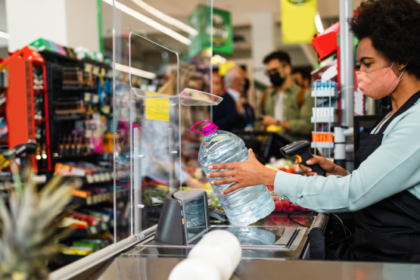
Three years ago, industry experts predicted a mass retail apocalypse. Consumers were expected to order everything online, abandoning physical stores for websites. The stress of Covid-19 accelerated the trend, shuttering many retailers for good. But one retail category unexpectedly thrived in the pandemic: grocery stores.
“In this environment that should have killed the grocery store in many cases, not only did it not kill it, it strengthened it,” says Ethan Chernofsky, vice president of marketing at Placer.ai, a tech company that tracks and analyzes foot traffic for retailers. “People love grocery shopping and they very often prefer the visit to the store.”
“There’s a love affair with grocery stores,” says Christine LaFave Grace, executive editor of Winsight Grocery Business, a trade publication for the grocery industry..
In the midst of another wave of Covid cases, the war in Ukraine and rising costs due to inflation, “there’s a really continued, sustainable opportunity for the grocery space,” Chernofsky says. Though consumers’ dollar spend at grocery stores has far exceeded industry estimates, the industry needs to adapt to a changing customer.
Chernofsky and Grace shared their views on the marketplace in Winsight’s webinar “2022 Grocery Deep Dive: What’s Changed and Who’s Thriving.”
Regional Shifts
During the pandemic, many consumers – especially young families – left city centers for the suburbs.The suburban grocery shopping experience is new and different for former city dwellers – stores are bigger, selection is greater and the shopper’s pantry space at home is typically much larger.
“A lot of these changes really demand that grocers on a regional and a location-based level to say: ‘What’s changed in our specific area? Where does it provide us with opportunity? Where does it provide us with risks?’” he adds. These are not huge overhauls like moving stores, but minor adapting moves “to better align myself with where the opportunities are.”
For example, coffee shops are one of the strongest performing sectors within the food industry. Grocery stores with on-site coffee bars and an in-house bakery create a similar experience for their shoppers. Selecting merchandise tailored for a local audience also creates a differentiated shopping experience.
“Grocery stores are hitting a whole other level of potential that wasn’t possible a few years ago,” Chernofsky says. “It’s a fundamental shift in what we expect from these areas.”
Recession-Proof
Grocery stores have shown their staying power during economic downturns, since they sell essential products. As America braces for another recession – 68% of CEOs in a recent survey feel one is imminent – buying patterns in groceries are likely to change but not decrease.
“Difficult economic environments [do] not mean everything comes to standstill,” Chernofsky says. People may not have as much money to spend at the grocery store, but they’re still spending.
For example, if restaurant spending drops – as it typically does in a recession – grocery stores can offer consumers the eating-out experience by selling DIY meal kits and grab-and-go meals.
“Everything we’re seeing to this point is showing us demand has been incredibly resilient,” Chernofsky says. “The retailer has to continue to evolve and push to innovate.”
